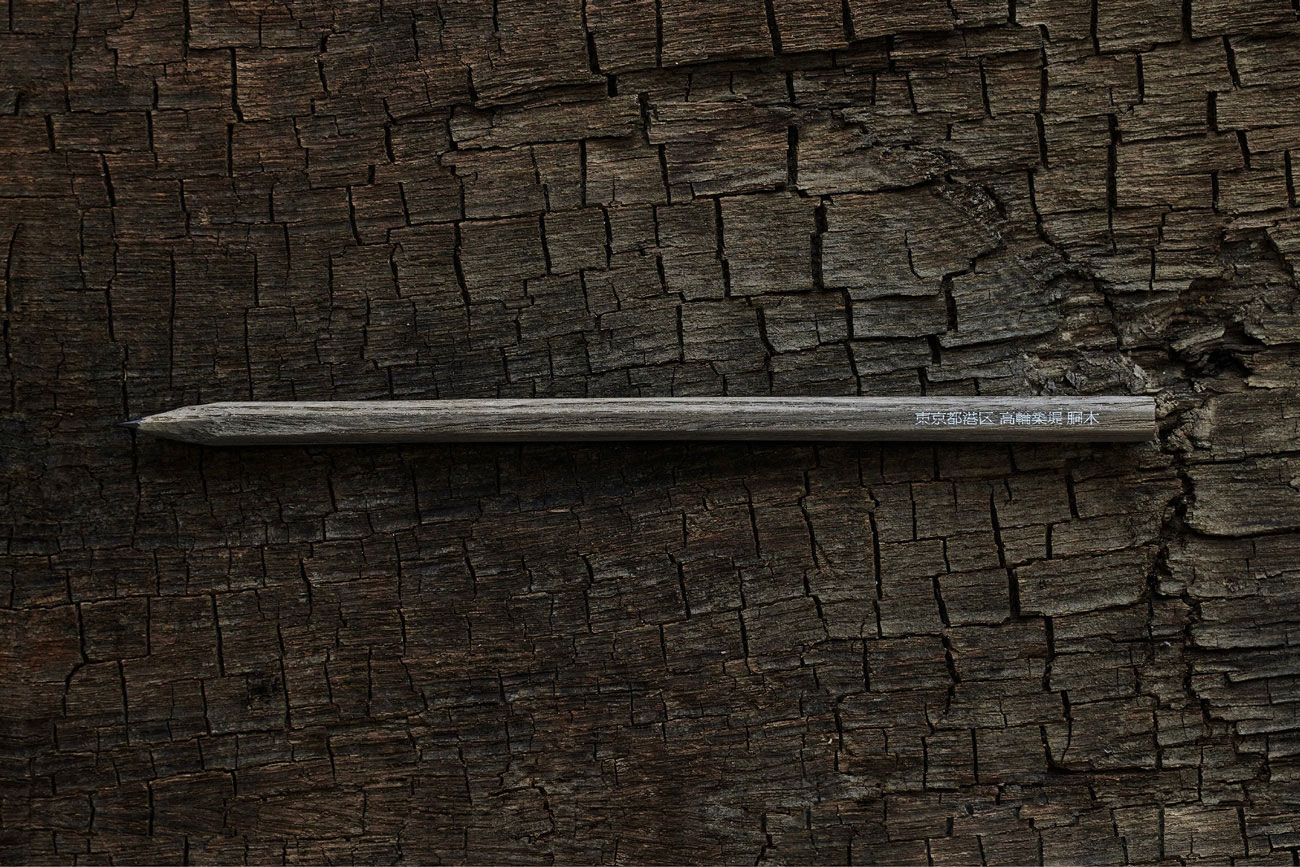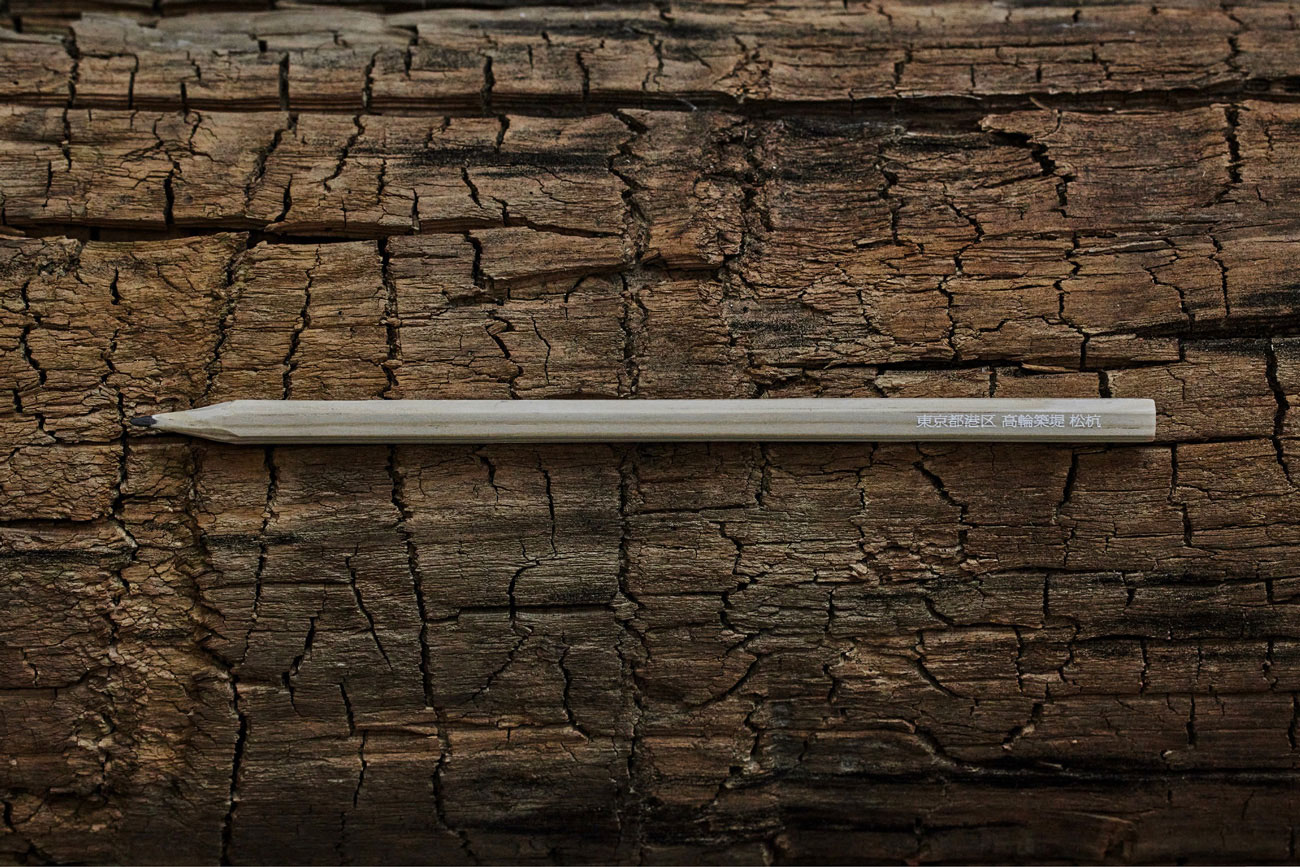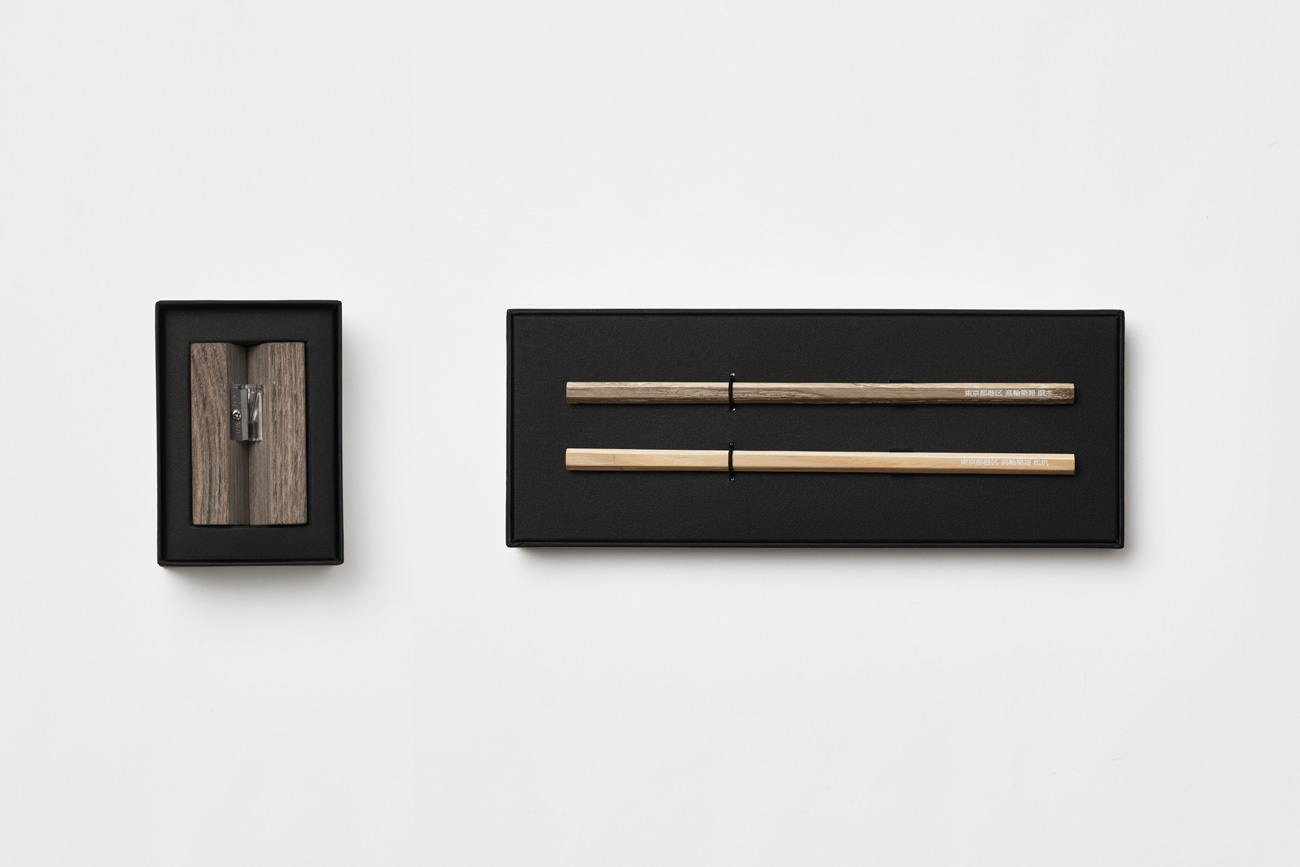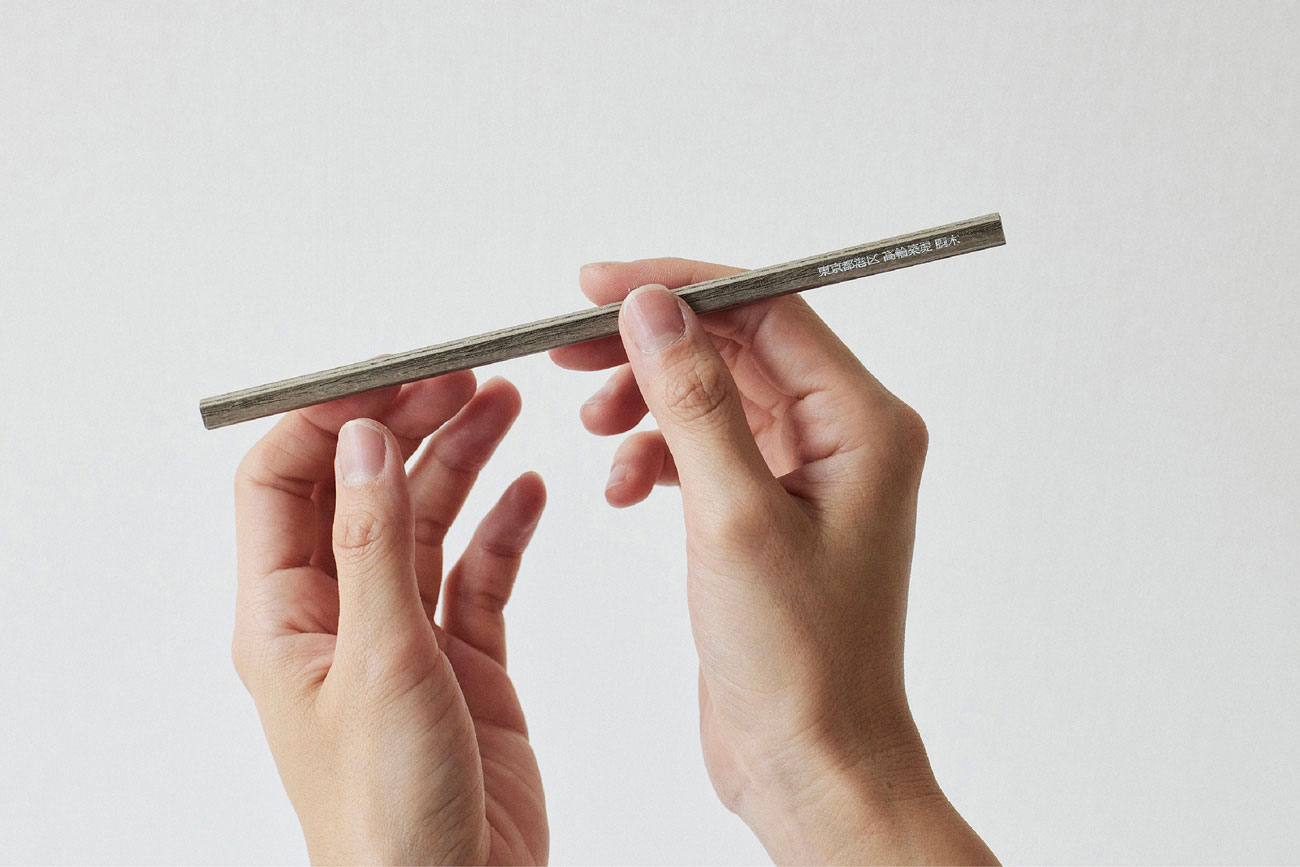FROM CONTEST TO MARKET
Pencil of Memories
<2020 Grand Prix>
What if a pencil lived a past life? Giving new life to leftover wood thrown away from used furniture and buildings.
The impressions engraved on each and every piece serve as a reminder of the wood’s rich history.
Woodgrain and traces of tanning. Texture, color, and a subtle scent.
Let the impressions painted on the surface of the wood leave an impression somewhere inside you.
Introduction video about products :
https://youtu.be/wvnz2f3-FRE(YouTube)
*Only available for purchase in Japan.
A chance encounter with Takanawa Embankment materials
Right after the first commercialization of the original “Pencil of Memories” (named “Someday, Somewhere” at the time of the award), which was made from the wood from an old house in Kobe City, the creators, obake (Natsuki Tomoda and Mai Miura) received a message from an old friend who worked at JR East who had heard that they won the Grand Prix at the KOKUYO DESIGN AWARD. During the redevelopment of Takanawa Gateway Station, timber was uncovered that had been part of the Takanawa Embankment, which supported railways during the Meiji period. The friend from JR East was calling to see whether that timber could be turned into a pencil.
When Ms. Tomoda went to see the excavation site, she saw that the wood had been buried in the sea for a long period of time, and said that she had a feeling that they could use it to do something interesting.
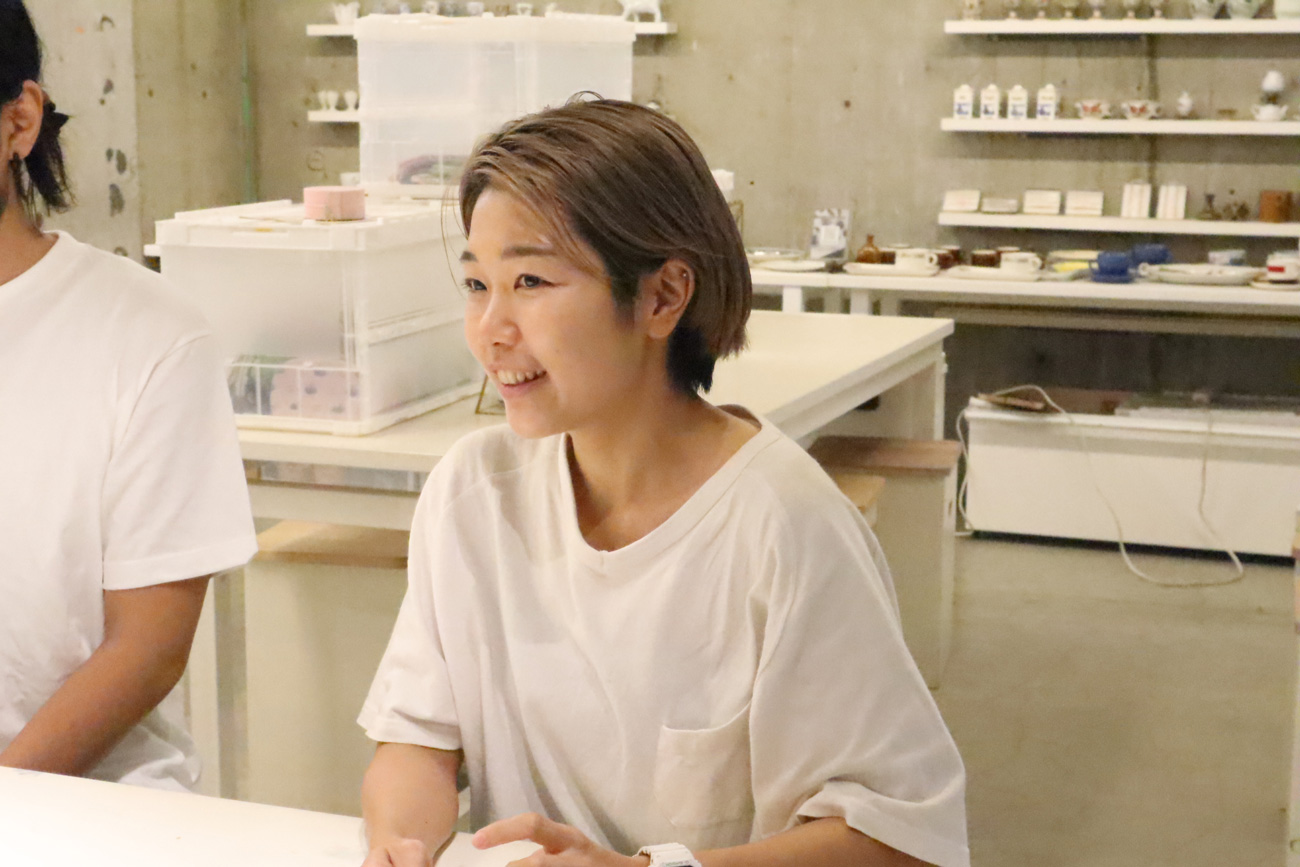
Natsuki Tomoda (obake)
Ms. Miura, on the other hand, looked back on her experience with the first series of the “Pencil of Memories” and felt just how difficult it can be to create stories with the potential to resonate with lots of people. The wood used to support the Takanawa Embankment was a material of a completely different scale than the material used previously. She felt that she could deepen her understanding of the “Pencil of Memories.”
Rare wood brings new challenges
Ms. Tomoda took a piece of timber from the Takanawa Embankment to use for a trial run, and brought it to Makers’ Base in Meguro, Tokyo, the same place where they had produced a model used for final screening in the KOKUYO DESIGN AWARD. It’s a shared workshop with more than 200 types of machines and tools used for a wide range of production such as woodwork, metalwork, ceramics, sewing, and more.
Naoto Yoshizaki, who is mainly engaged in wood processing, is a carpenter specializing in building temples and shrines. I vividly remember my surprise when I shaved away at the surface of the wood brought in by Ms. Tomoda.
“Based on the place where it was used, in addition to the grain and the texture, I knew right away that the logs for timber footing were chestnut and the piling was pine. When I cut away at the surface, the chestnut turned out to be a calm gray in color, while the pine was a calm white, which is hard to find in any other tree. I felt that perhaps this only happened since the tree was buried in salt water for 150 years.”
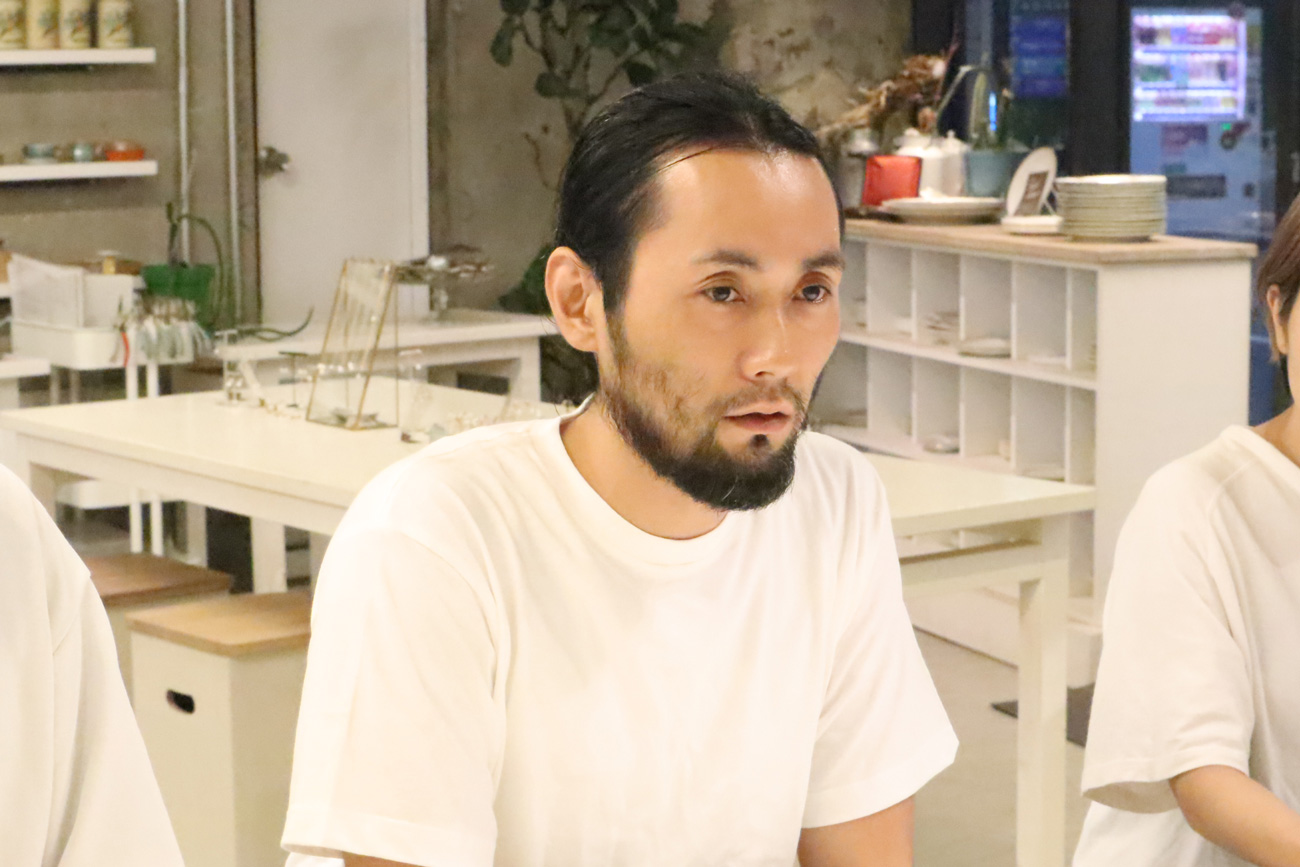
Naoki Yoshizaki(Makers’ Base)
The machine could rust depending on the salt content in the wood, and there was also a risk of injury from embedded metal fragments. However, he said that there were benefits that made this risk worth it.
The basic concept behind the Pencil of Memories was to leave scratches on the surface of the old wood, but for the Takanawa Embankment, half of the wood was decayed and couldn’t be used.
However, he thought it would be possible to “inherit the wood’s memories” by using the parts closest to the lead and turning them into a pencil, so he made a prototype and gave it to Ms. Tomoda, and there was plenty of potential for commercialization.
Unconventional re-commercialization
Fujiki, who was supporting the KOKUYO DESIGN AWARD’s commercialization at the time, was also one of the people who was most fascinated by the texture created by the prototype pencil.
Together with the fact that the Takanawa Embankment is a piece of historical heritage depicted in an ukiyo-e by Utagawa Hiroshige, the desire to preserve this wood for future generations before it decays rapidly grew.
The concept behind the Pencil of Memories reminds us of the history of the tree and wood used to make the pencil that would not otherwise have been touched, and the compatibility between the concept and the wood from the Takanawa Embankment was obvious to everyone.
Until now, once a product has been commercialized, it has never been re-commercialized by changing the materials it is made of, but this is the first example of a “Pencil of Memories” whose value fluctuates depending on the chosen material. Although it was an unusual initiative, the commercialization project was started because it was also in line with KOKUYO’s goal of supporting the work of young designers.
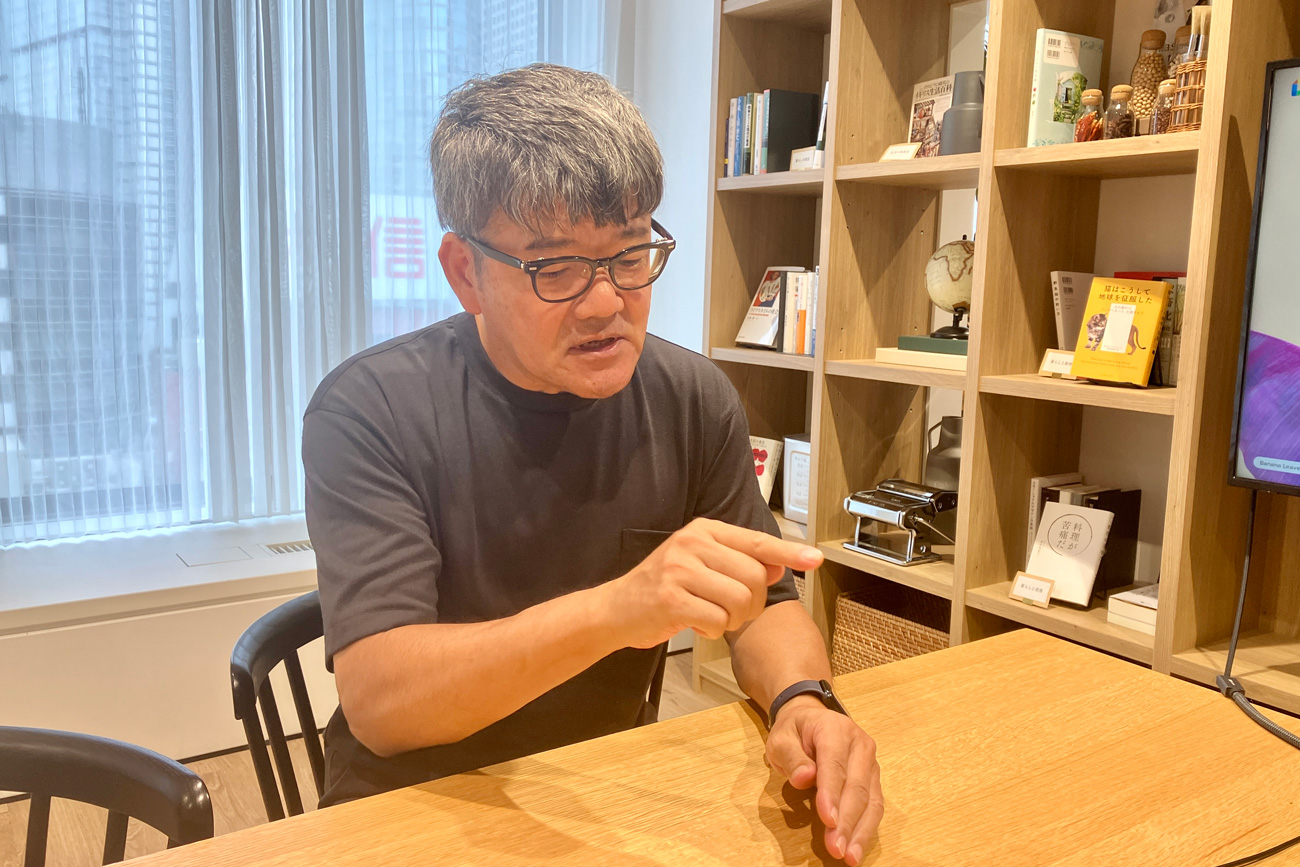
Takeshi Fujiki (Senior Designer, Grobal Stationery Development Department, KOKUYO)
Fujiki, who was familiar with the challenges of production through the commercialization of the first Pencil of Memories , chose Makers’ Base as a contractor for the production. They had a full range of machines, including a UV printer that could place stamps on the pencils. Also, after seeing the prototype of the first Pencil of Memories, which Mr. Yoshizaki made, everyone was impressed by his skills and knowledge. This is why Fujiki chose Makers’ Base to produce the prototype of the second Pencil of Memories.
As a result of this decision, each Pencil of Memories will be handmade one by one, which means that the price will also be revised, so rethinking the value could not be helped.
How to create added value
Junpei Matsuda, a representative of Makers’ Base, said that when he first received a production request from KOKUYO, he felt that it would be possible to make the item, but that it would be extremely difficult to actually sell it.
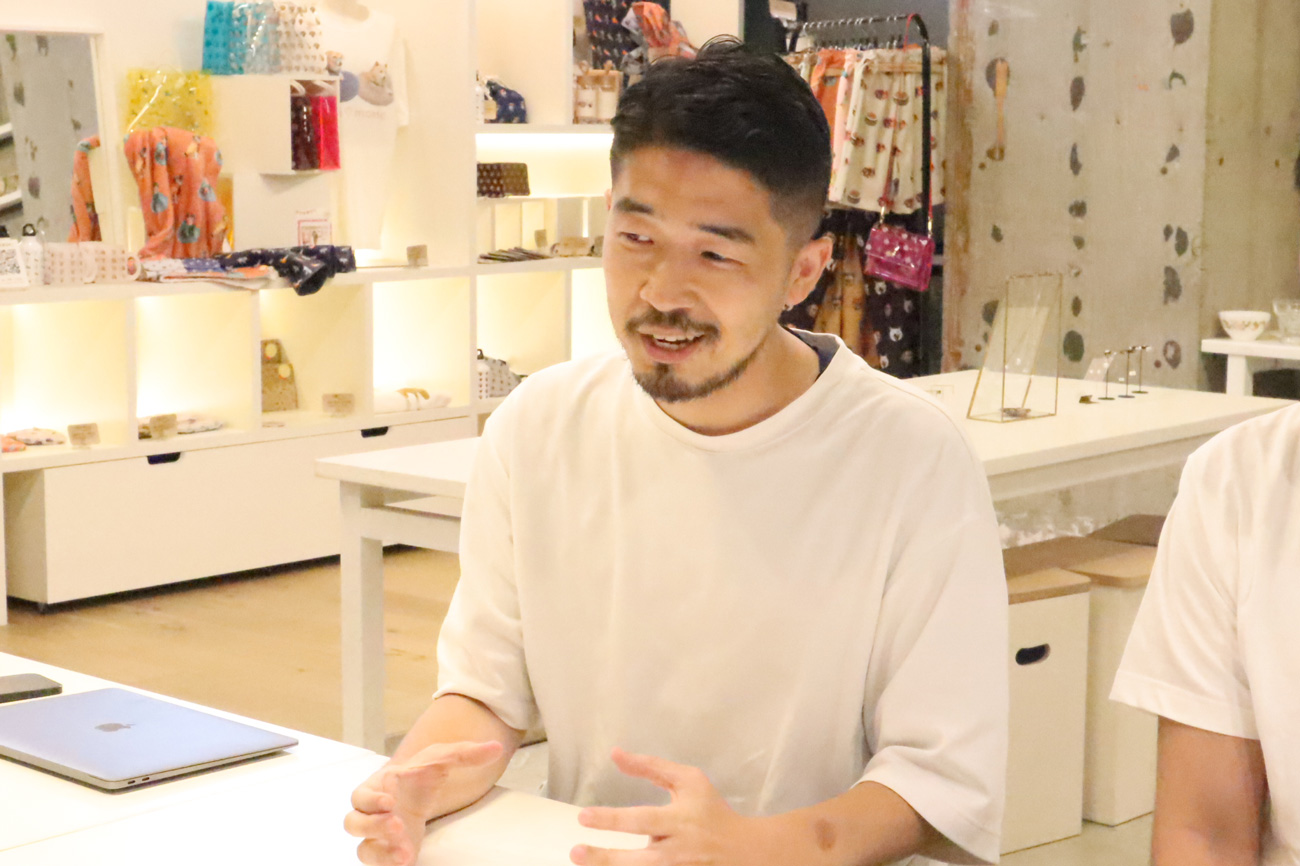
Junpei Matsuda (Representative of Makers’ Base)
When craftsmen make items one by one, making the items takes time and the price per unit will inevitably go up and up. “I wonder if we won’t succeed unless we go beyond simply selling old pencils. We need to sell them in a way that shares some sort of value. I don’t want to waste my employees’ time on products which I don’t think will succeed.” With Mr. Matsuda’s sincere advice, I decided to explore new challenges not only in production but also in sales methods.
How can we convey value that goes beyond simple pencils? As a result, we decided to go with crowdfunding. The sales method was a good fit for the project, in which empathy with the product’s story leads people to purchase.
The essence of the value appealed through crowdfunding is also a new way to store and share this valuable wood. It allows you to hold the history of both the region and the railway in the palm of your hand. In this way, we gradually built the story of the Pencil of Memories.
Commitment to quality
Mr. Yoshizaki, is in charge of pencil manufacturing. He often says, “This small pencil is filled with the essence of woodworking.”
Technical skills are indispensable when making a copy with a high level of accuracy. This is even more true when the item is small and thin.
For example, Mr. Yoshizaki found solutions to each challenge he encountered, such as how to correctly place the lead in the center of the pencil and how to make the hexagon look nice by handcrafting them one by one with a special jig.
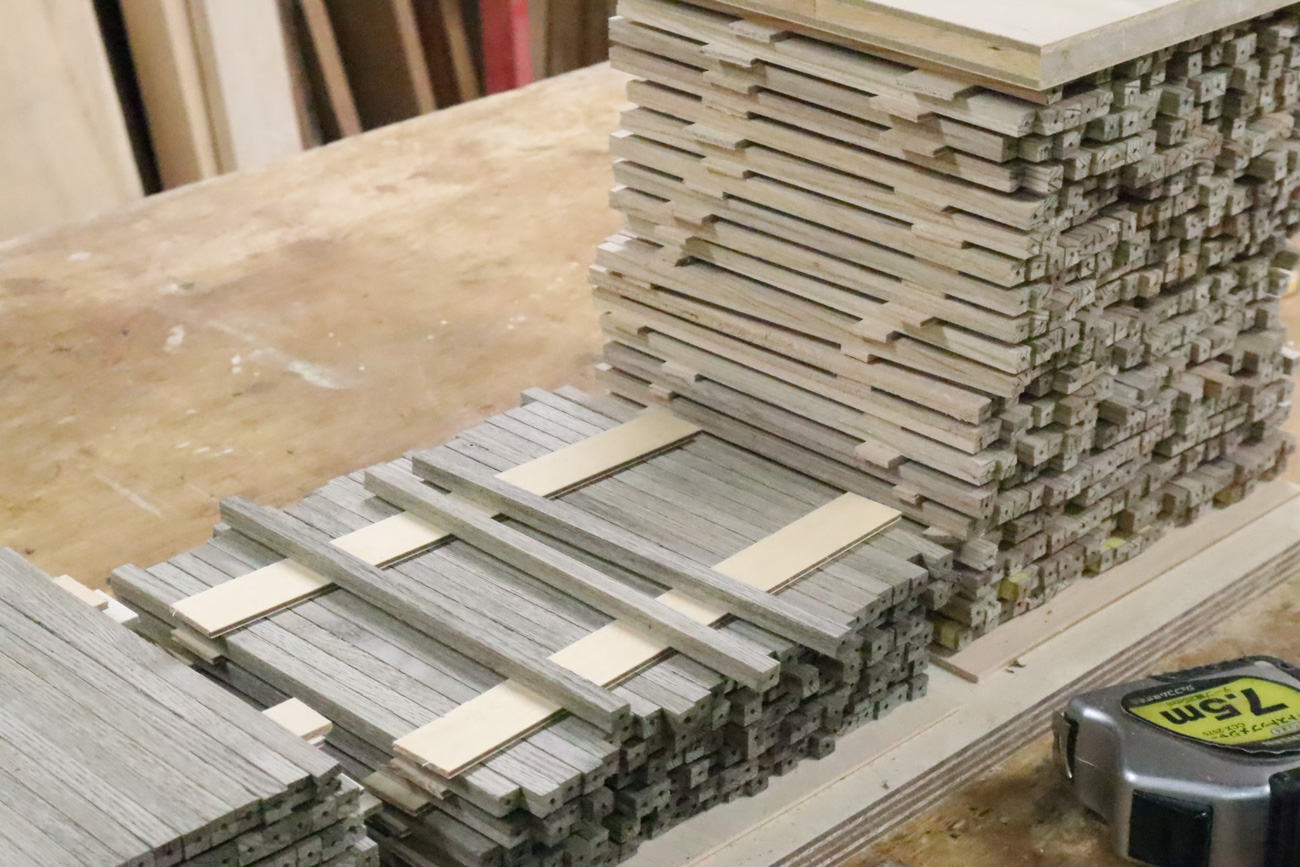
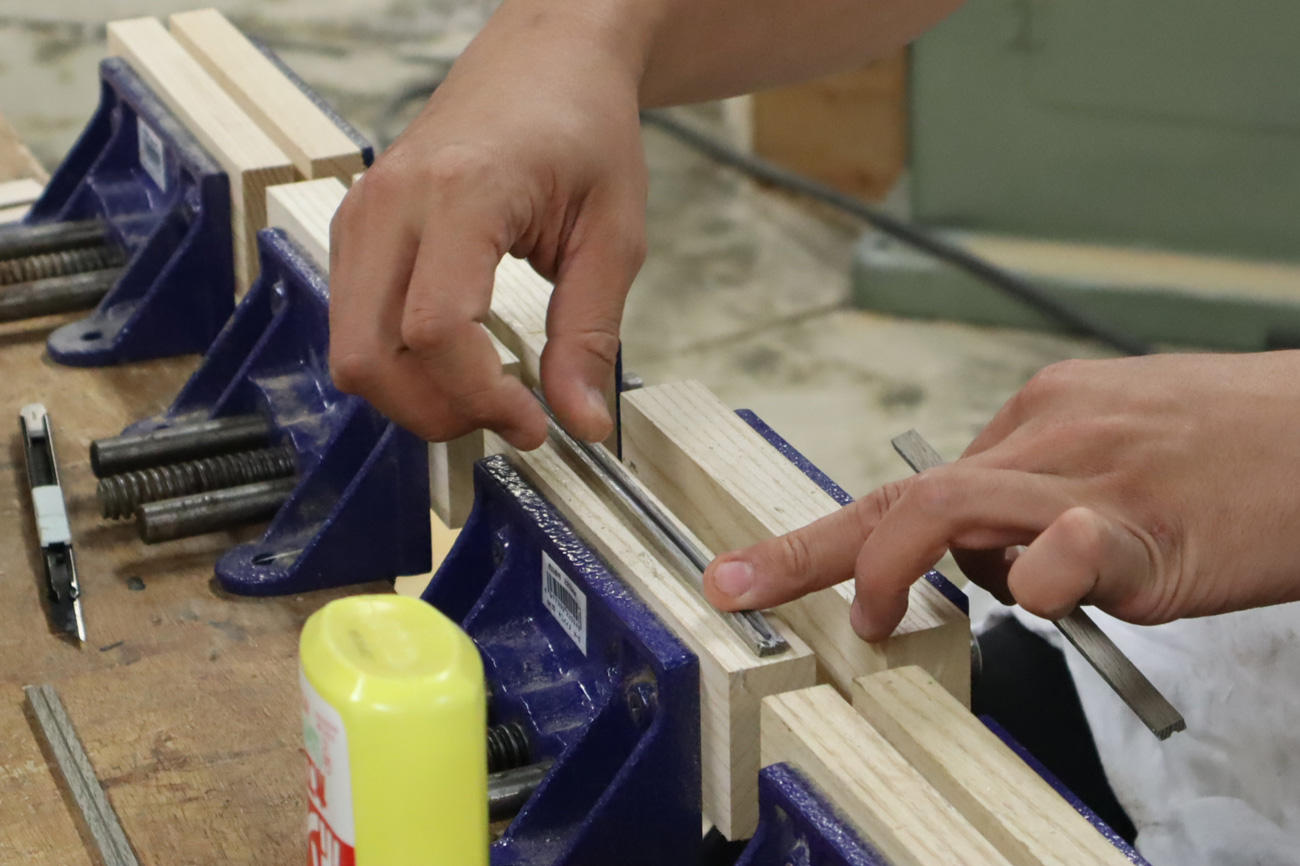
While the woodworking steadily progresses, the quality of the lead is also a challenge.
The material from the Takanawa Embankment is very old, and is even harder than ordinary wood. If we use ordinary pencil lead, the lead would almost always break while you sharpen the pencil.
We consulted a company specializing in pencil manufacturing to help us with this. Although the same graphite was used for the material, the company was able to solve the problem by helping to procure a polymer lead (usually used in mechanical pencil leads) that uses synthetic resin to bake and harden graphite powder instead of the conventional clay, and by changing the bonds used to glue the lead and pencil together.
We were particularly concerned with the design of the packaging.
“I designed the packaging so that it could be displayed like a picture frame without seeming off when used as a close at hand piece of history and interior decoration. Packaging is normally meant to protect its contents, but we designed ours so that the height of the inner box when the lid is opened matches the height of the outer box for decorative purposes. It’s like a specimen,” said Ms. Tomoda.
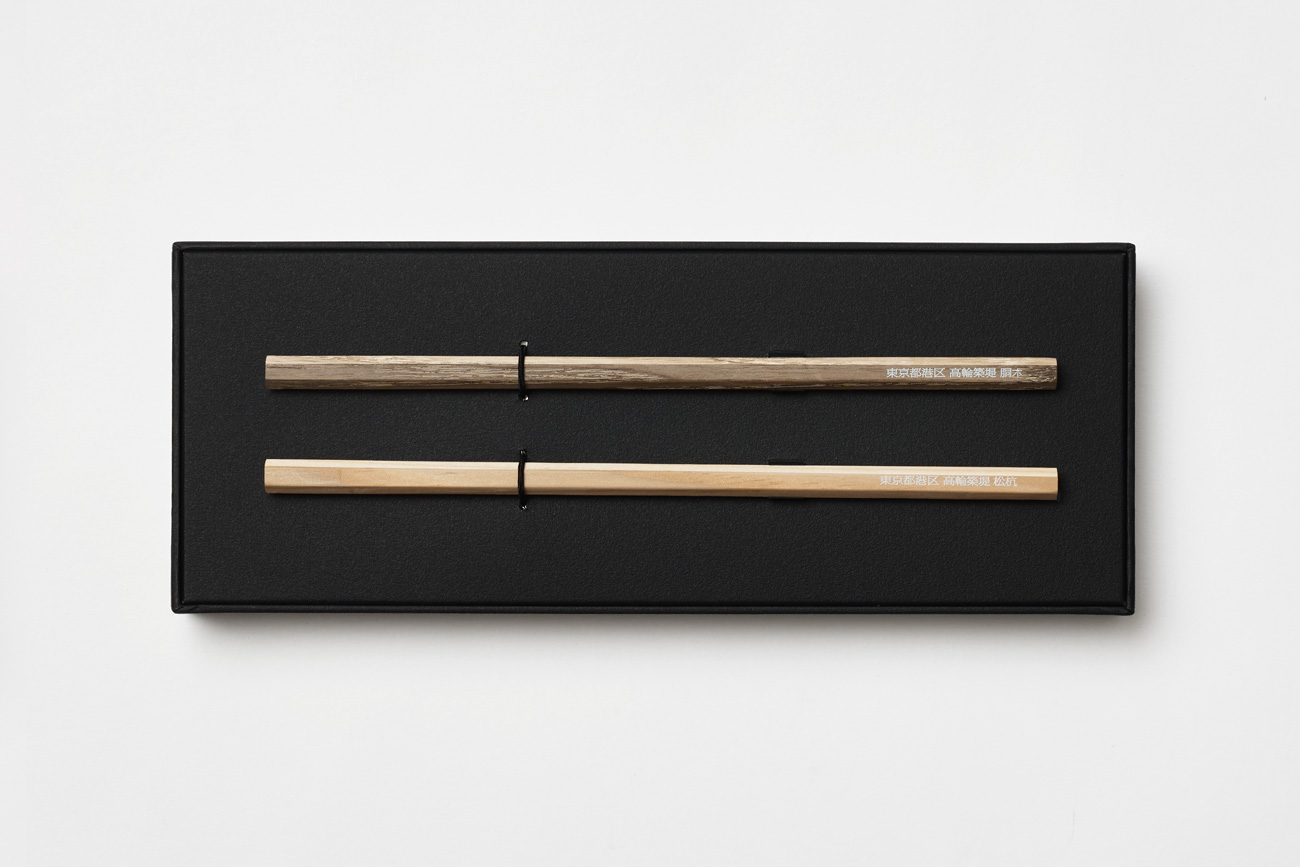
The package includes a leaflet that explains the history of the Takanawa Embankment in an easy-to-understand manner.
“Until now, we intentionally gave no explanation on the wood, since we wanted people to think about the history of the wood with as little information as possible. In order to convey the feelings of not only obake, but everyone involved in the Takanawa Embankment to the next generation, we made a leaflet to explain the embankment’s location and role in a way that could also be conveyed in words,” said Ms. Miura.
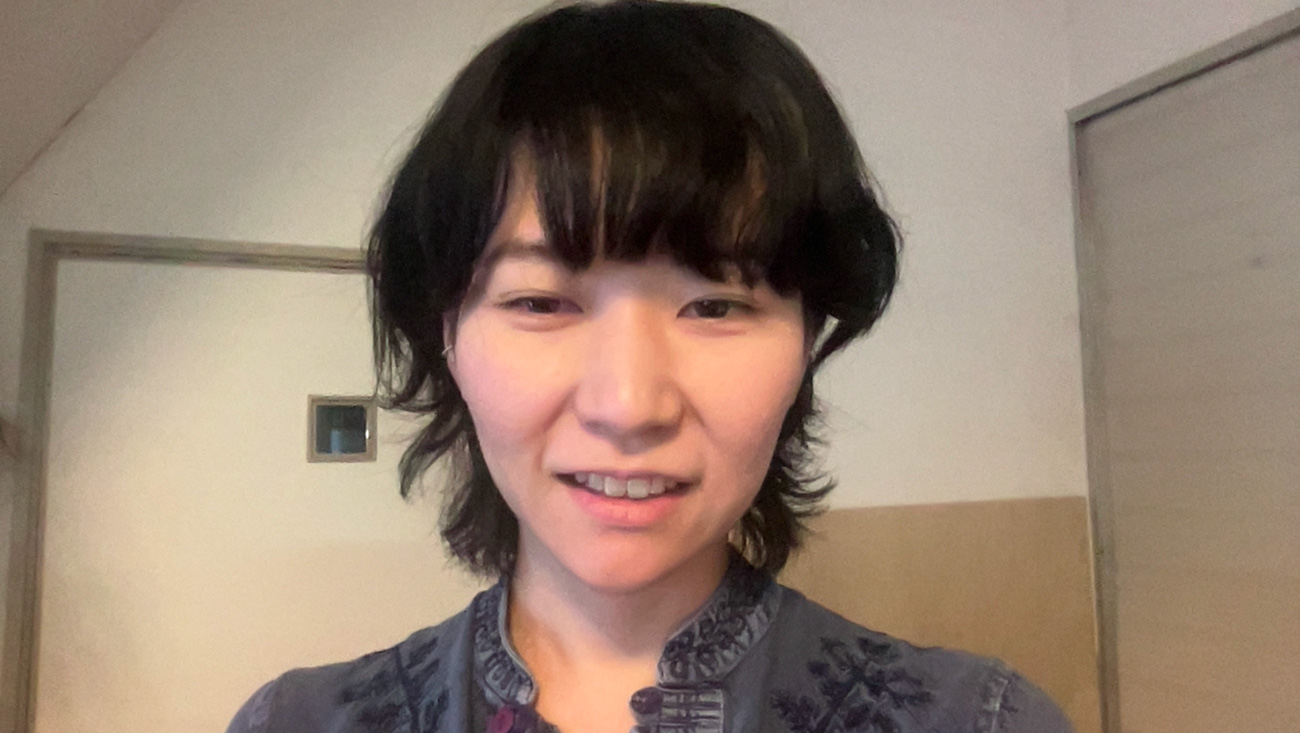
Mai Miura (obake)
To those who will use the pencil
“I would be happy if people who have a connection with Takanawa or those who have been involved with railways would see it as a highly rare gift,” says Mr. Matsuda of Makers’ Base. “It may seem like it’s simple, but it’s packed full with woodworking technology, so please take your time and savor it,” said Mr. Yoshizaki.
Ms. Miura said, “It’s a precious item that will never be made again.” It’s an item that you can savor by physically touching history with your own hands, so I want it to be carefully passed down to many people.”
I think it’s great that we have achieved collaboration between different industries that we would not otherwise encounter. What pushed the project forward was a desire shared by everyone involved to share and preserve the value and appeal of the timber from the Takanawa Embankment to as many people as possible. I would be very happy if the people who buy these pencils in the future could share their thoughts with us and relive how we felt,” said Ms. Tomoda.
The Takanawa Embankment has woken up from a long sleep. As a reincarnation of the embankment, the Pencil of Memories embark on a journey to forge new memories through the thoughts of their creators.

obake duo (left: Natsuki Tomoda, right: Mai Miura)




















